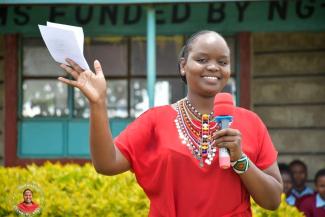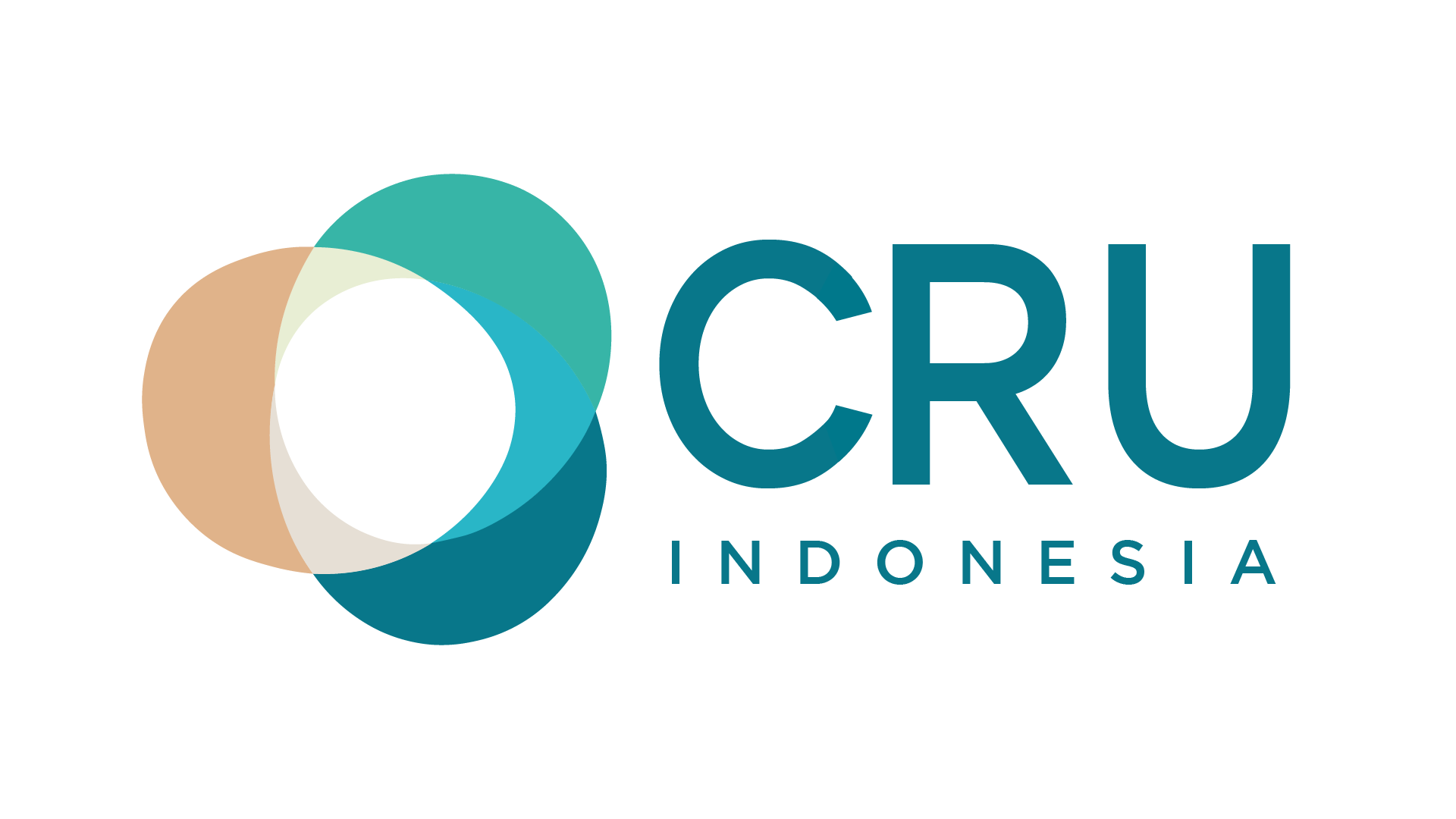Dr. Mayian Lekirimpoto: The Samburu Doctor Proving That Science Belongs to Indigenous Women, Too
10 Februari 2025agnes

By Lucas Kasosi (Maasai, CS Intern)
If you ever find yourself in a remote Samburu village at night, you might stumble upon a scene that feels straight out of a centuries-old tradition women huddled around a bonfire, their voices rising and falling in conversation as the fire flickers against their beadwork and shukas.
What you won’t expect, though, is that somewhere in the circle, amid the warmth and easy laughter, sits a doctor. One who has traded hospital corridors for cow-dung-floored Manyattas, swapping PowerPoint presentations for fire-lit discussions on reproductive health.
A woman dressed in a doctor’s coat by day and a shuka by night, bridging the gap between modern medicine and Indigenous wisdom.
Meet Dr. Mayian Lekirimpoto, one of the few Indigenous Samburu women in medicine. She is a doctor who, instead of leaving her people behind, came back to rewrite the story of what is possible for Samburu girls, Indigenous women, and science itself.
A Scientist Born in the Dust
Dr. Mayian’s story does not begin in a laboratory or a university lecture hall. It begins in Lolkunono, a remote Samburu village where school happened under trees, where the first book you ever wrote in was the ground, and where a pencil, if you were lucky enough to own one, had to be sharpened with a knife.
“I mostly grew up with my grandmother,” she says. “My mom had me when she was still in high school, so my grandma took me in.”
Her grandmother was not a doctor, but she knew things. The kind of knowledge that never makes it to medical journals the phases of the moon and their impact on childbirth, the way a Samburu woman’s body moves differently after she has carried water for years, the herbal remedies for fever that the colonizers never bothered to write down.
It was here, under the sunburnt sky of Samburu, that Mayian first learned medicine. Not from textbooks but from old hands mixing herbs, from whispered conversations at dusk, from the soft cries of newborn calves struggling to take their first breath.
Still, there was one problem.
She had never seen a Samburu doctor.
“There were no doctors in our village. At least, none with names that sounded like mine,” she recalls. “You’d hear ‘Dr. So-and-So,’ but never a Samburu woman. Never someone who looked like me. So I figured if I couldn’t find one, I’d become one.”
In a world where Indigenous women were rarely encouraged to pursue science, Mayian didn’t just break the mold she shattered it.
Dr. Mayian engaging local Samburu women on reproductive health. Image courtesy of Dr. Mayian Lekirimpoto.
Shanghai, Science, and the Struggles of Being First
If there’s one thing more unpredictable than life, it’s the way little details sneak into our stories long before they make sense.
For Mayian, that detail was the word Shanghai.
“My grandfather, a World War II veteran, used to buy me pencils with ‘Shanghai, China’ written on them,” she laughs. “I had no idea what Shanghai was, just that it sounded exotic and far away.”
Fast forward to her twenties, and there she was in Shanghai, China, on a fully funded medical scholarship, attempting to master both surgery and Mandarin at the same time.
“Medicine was taught in Chinese,” she says with a laugh. “So I spent my nights translating textbooks, chasing down lecturers, and basically faking confidence until I had real knowledge.”
She was also the only Black student in her class an anomaly in a world that barely recognized where she came from.
“But that made me work harder,” she says. “If I was going to stand out anyway, I might as well be the best.”
She could have stayed abroad, built a career in a big city, or chased the prestige that came with her degree. Instead, she chose Isiolo County, a frontier town bridging pastoralist communities, where access to healthcare was still a privilege, not a right.
Dr. Mayian conducting a medical check-up on a child. Image courtesy of Dr. Mayian Lekirimpoto.
Science, But Make It Indigenous
For many Indigenous communities, science and tradition have long been framed as opposing forces one modern, the other ancient. Dr. Mayian refuses to accept that division.
“Western medicine tells people what they need,” she explains. “Indigenous knowledge tells them why it matters.”
So, she adapted. Instead of asking women to come to hospitals, she brought medicine to the bonfires, those nightly gatherings where Samburu women share stories, wisdom, and quiet resilience.
“That’s where they talk. That’s where they listen,” she says. “So that’s where I go.”
She speaks to them in Maa, her mother tongue, about reproductive health, safe childbirth, and diseases they had never named before. She explains cervical cancer screenings in the same tone their grandmothers once used to pass down folklore of old lovers and lost cattle.
And when digital health solutions failed to reach rural women, she reinvented science with beads using traditional beadwork to help women track their menstrual cycles.
“You know how women in cities track their cycles with apps?” she asks. “We do it with beadwork. Different colors for fertile days, safe days, and period days.”
Simple. Effective. Indigenous science at its finest.
Dr. Mayian donating pads to young girls to combat period poverty through her organization, Naret. Image courtesy of Dr. Mayian Lekirimpoto.
The Fight for Indigenous Women in STEM
Dr. Mayian’s story is not just her own.
It is the story of thousands of Indigenous girls whose brilliance is buried under systemic barriers early marriage, lack of education, and a world that rarely imagines them as scientists, doctors, or engineers.
Globally, women make up less than 30% of the STEM workforce, and for Indigenous women, the numbers are even lower. The barriers they face are double-edged: the gender gap that keeps women out of science, and the cultural gap that makes Indigenous knowledge invisible in mainstream research.
But women like Dr. Mayian are proving that science belongs to Indigenous communities too. That gender equality in science is not just about putting more women in labs, but about making science serve the realities of all women—rural, Indigenous, forgotten.
Through her nonprofit, NARET, she is fighting to make reproductive healthcare accessible, culturally relevant, and shame-free. She’s pushing for policies that reflect Indigenous realities, working with grassroots health promoters, and ensuring that no girl has to choose between tradition and education.
“The future?” she muses. “It looks like young girls who say ‘I want to be a doctor’ and believe it’s possible.”
Dr. Mayian attending to a local woman as part of her routine work. Image courtesy of Dr. Mayian Lekirimpoto.
A Village of Mayians
If you ask her what success looks like, she won’t talk about degrees or hospital titles.
She’ll tell you about the women who named their babies after her, the young boy in Samburu who wrote ‘Dr. Mayian To Be’ on his schoolbook, and the girls who now say ‘I want to be a doctor’ and believe it.
“I used to be the only Samburu woman in my field,” she says. “I don’t want that anymore. I want a hundred more.”
Her work is not just about medicine. It is about creating a blueprint for Indigenous women in science, proving that you can come from a village where girls are meant to marry young, where classrooms are under trees, and where doctors have never had your name and still become one.
Today, as we celebrate the International Day of Women and Girls in Science, Dr. Mayian reminds us that STEM is not just about labs and microscopes. It’s about making science culturally relevant, about making it belong to everyone.
At Cultural Survival, we believe that Indigenous knowledge and modern science are not opposing forces but partners in creating sustainable, community-driven solutions. Through advocacy, funding, and amplifying Indigenous voices, we are committed to ensuring that more Indigenous girls have access to STEM education, more Indigenous scientists are recognized, and more Indigenous knowledge is integrated into global scientific conversations.
By investing in Indigenous women in STEM, we are investing in the future of healthcare, environmental sustainability, and cultural preservation, ensuring that Indigenous communities continue to lead, innovate, and thrive on their own terms.
Top photo: Dr. Mayian Lekirimpoto, Founder and Director of Naret Organization. Image Courtesy of Dr. Mayian Lekirimpoto.
